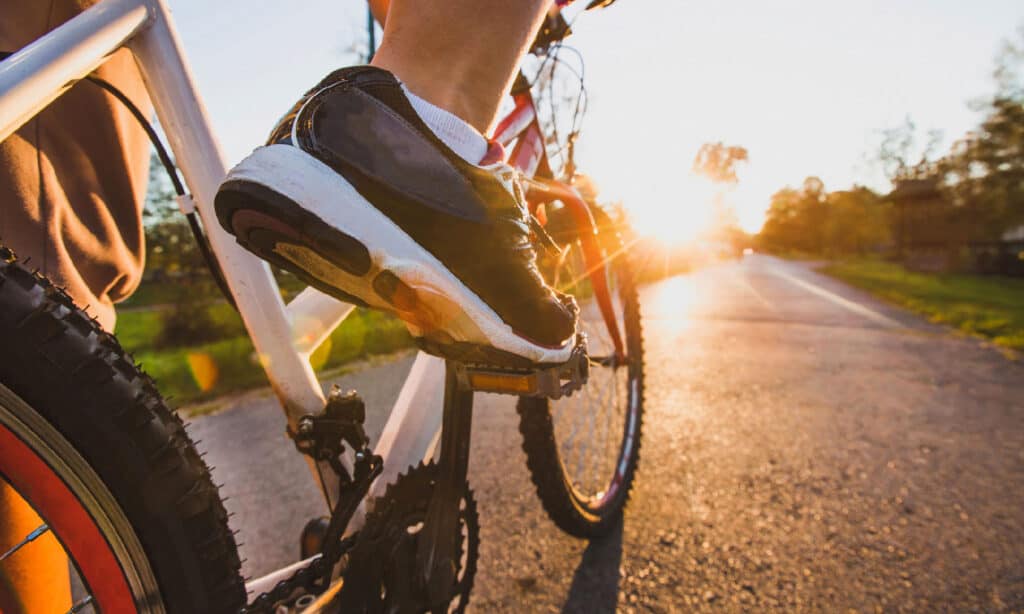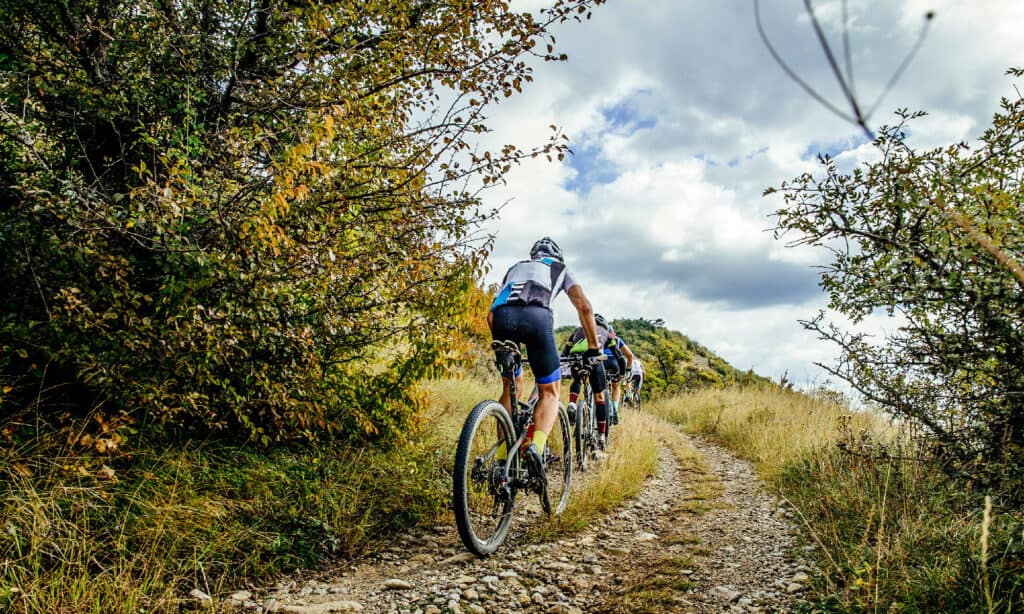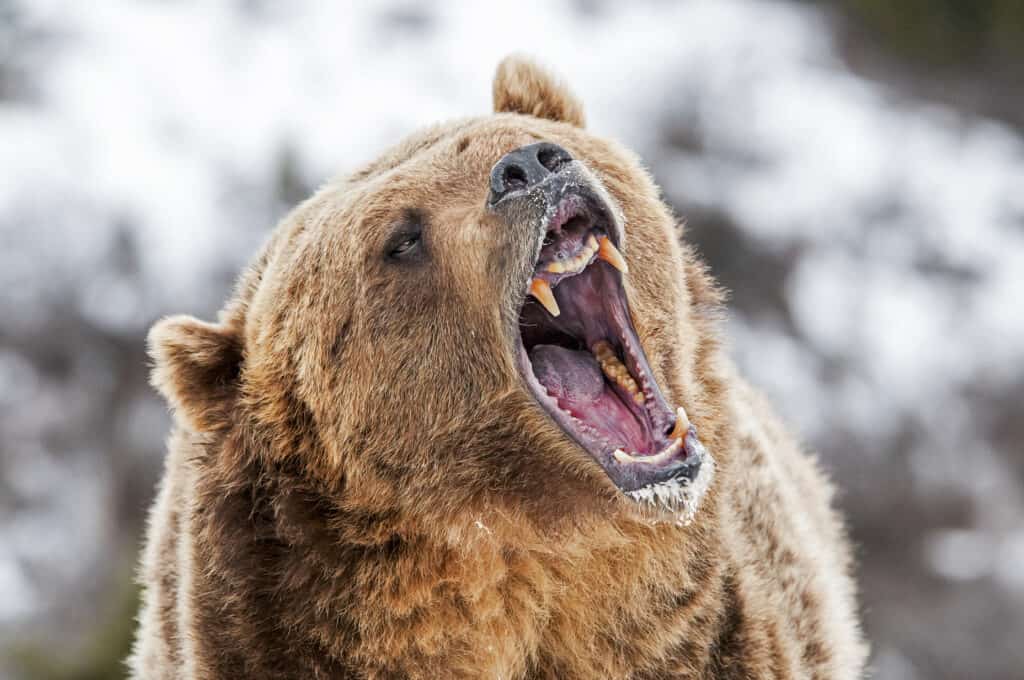Wyoming is home to Yellowstone National park, which is one of the most popular nature reserves in the United States. You can also find several forests, rolling hills, prairies, and mountainous regions in Wyoming that offer a great scenic view. The state is filled with rich beauty, and biking is a perfect way to explore the state while getting some exercise. While there are various trails to enjoy in the state, this article will cover the longest biking trail in Wyoming.
The Longest Biking Trail in Wyoming

Jackson Hole Community Pathway System is the longest biking trail in Wyoming.
©iStock.com/anyaberkut
Wyoming is filled with hundreds of biking trails, some going on roads, and others through mountains. The Jackson Hole Community Pathway System is one of the longest biking trails in Wyoming. This path runs for around 76 miles, and is used for biking, running, or walking. Some sections of the trail are roads, while others are designated pathways.
This trail is multi-use, and parts of it extend into the Grand Teton National Park. When riding your bike you should wear your helmet, and obey the traffic laws.
A fee is required if entering the Grand Tetons National Park. Each visitor aged 16+ is required to pay a $20 entrance fee if entering the park by foot or bike. Driving a private vehicle into the National Park costs $35. An annual pass is available to view the Grand Tetons National Park and its trails for $70.
The Jackson Hole Pathway System
There are multiple segments for biking or walking on the Jackson Hole Pathway. Hiking trails are also nearby if you want to take a deeper step into nature. Using the Jackson Hole Pathway Map is recommended so you can pre-plan your trip.
Segments of the Jackson Hole Pathway System
Moose to Jenny Lake: The round trip from the city of Moose to Jenny Lake is around 15.8 miles, and lets you bike near the Teton Mountains. This trail is fully paved, and only has an elevation gain of 450 feet. Biking this path will take around 2 hours for the round trip, and gives you a spectacular view of the mountains.
Moose to Jackson: The route from the Moose to Jackson is multi-use, and is paved for biking, walking, or jogging. It is stroller friendly, and the route has an elevation gain of around 500 feet. The route is 12.2 miles one way, and round trip it is 24.4 miles. Completing a round trip on a bike at a leisurely pace takes around 3 hours. Following this path is straightforward, as it follows highway 89 and is linear.
Wilson to Teton Village: The route from the city of Wilson to Teton village is around 17 miles for a round trip. Completing this section without stopping takes around 2 hours. This pathway takes you to areas with shops, and restaurants, so you can stop while riding.
The Jackson Hole Pathway: The entire pathway system is around 76 miles, but you do not have to bike the entirety of it. Some of the sections like the beginning of Jackson to Wilson, or from Moose to Teton Village are only connected by the road. Road sections can be biked but will have cars. It is easier to use the multi-use pathway section, and they are safer. Looking at the pathway map allows you to form your own route so you can bike your preferred distance, and view the sights most enjoyable to you.
Preparing for the Jackshole Pathway Trails

You need to plan ahead if you are hiking on this trail.
©iStock.com/sportpoint
When preparing for any long ride your tires should be inflated, and bike checked. Nearby the Grand Teton National Park are places to rent bikes, or if you need to stop to fill your tires. The time of year you plan on visiting is also important. The months from spring to fall are the best time to visit the site, as the temperatures are cooler and the plants are blooming. In winter the climate gets extremely cold, with snow covering the landscape. In some seasons some segments are also closed for bad weather or construction.
Bringing a pet is only allowed in some of the sections, and they must be on a leash and cleaned up after. Some areas do not allow pets, so be sure to check the segment you plan to visit.
Water is essential for any bike ride, and is useful for riding long distances. The sun and wind are the most damaging elements on this trail, and wearing the correct biking clothes can help protect you when riding.
Wildlife Near The Grand Teton National Park Trail

Grizzly bears are common in the surrounding habitat of the trail.
©Scott E Read/Shutterstock.com
The Jackson hole pathway trails are located near the Grand Teton National Park, which is filled with an abundance of plants and wildlife.
Biking the Jacksonhole pathways in the Teton Mountain range you get a view of the mountains, forest, and plains nearby. Colorful wildflowers like aster, larkspur, and skyrocket gilia bloom throughout the year, adding bright colors to the green scenery.
The Snake River also runs into the Grand Teton National Park and is sometimes in view when riding. Animals like grizzly bears, brown bears, elk, bison, and pronghorn live in the surrounding habitats. Moose, bighorn sheep, bison, and eagles are the animals seen most near the trails and roads. Birds like swans, western tanagers, and ospreys live in the area. The Grand Teton National Park is one of Wyoming’s best bird-watching spots, and biking the Jackson hole pathway allows for a chance to spot plenty of wildlife.
Biking in the Grand Teton National Park showcases Wyoming’s beauty, and there are a variety of different paths to follow.
Up Next:
Looking to learn more about Wyoming? Check out these other interesting articles about the mountainous state.
- The 10 Biggest Lakes in Wyoming
- Discover Wyoming’s 2 Largest and Most Dangerous Snakes This Summer
- 10 Spiders in Wyoming
The photo featured at the top of this post is © iStock.com/BrianAJackson
Thank you for reading! Have some feedback for us? Contact the AZ Animals editorial team.






